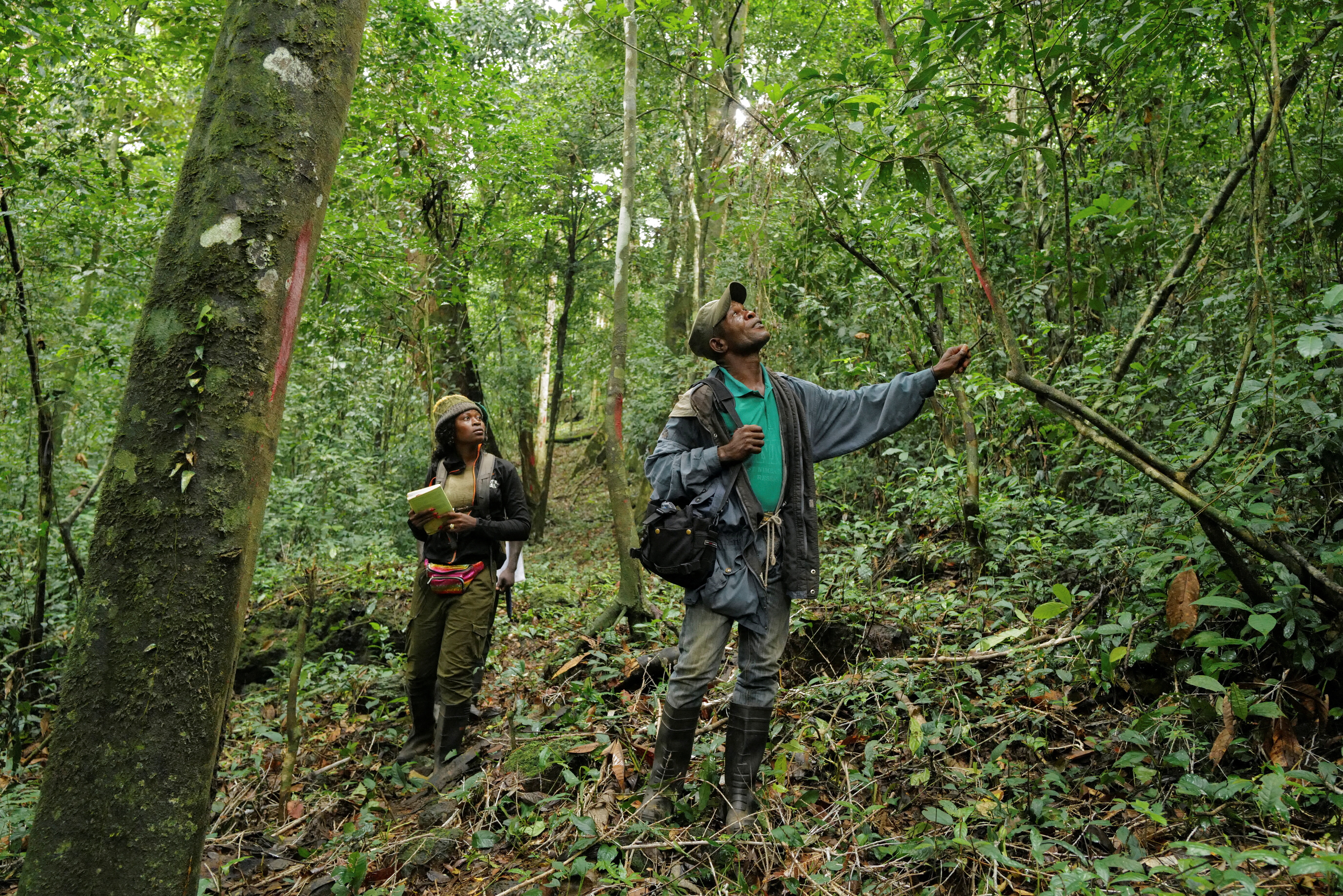Econophysics: Or why, when it comes to economics, we all behave like particles

A new study applies theories of collective particle motions to global trade data. Image: REUTERS/Michaela Rehle
Yuichi Ikeda
Professor of Physics, Graduate School of Advanced Integrated Studies in Human Survivability, Kyoto UniversityTakaaki Ohnishi
Associate Professor, Graduate School of Information Science and Technology, University of TokyoEditor’s introduction: Since its inception over two centuries ago, economics has made substantial advances by incorporating insights and methods from other scientific disciplines. One emerging interdisciplinary field that has gained traction over the last two decades is econophysics, which applies theories and methods from physics to traditionally economic problems and data. This column presents one of the latest contributions to the field, applying theories of collective particle motions to global trade data.
Recent theoretical studies using coupled limit-cycle oscillator models1 suggest that the interaction terms due to international trade can be viewed as the origin of synchronisation (Pikovsky et al. 2001, Ikeda et al. 2013, 2014). We observed various kinds of collective motions2 for economic dynamics, such as synchronisation of business cycles on the giant economic complex network. The linkages between national economies play an important role in economic crises as well as in normal economic states. Once an economic crisis occurs in a certain country, the influence propagates instantaneously toward the rest of the world. A salient example is the Global Crisis triggered by the defaulting of subprime mortgage loans in 2007 and the subsequent bankruptcy of a major investment bank affected by devaluation of mortgage-backed securities and collateralised debt obligations in 2008. The global economic complex network might show characteristic collective motions even for smaller economic crises.
Synchronisation of international business cycles
The World Input-Output Database has been developed to analyse the effects of globalisation on trade patterns across a wide set of countries (Timmer 2012). This database includes annual industry sector-specific international trade data on 41 countries and 35 industry sectors from 1995 to 2011, with 1,435 nodes in the international trade network. Figure 1 shows the temporal change in amplitude for the order parameter,3r(t), obtained from the analysis of the World Input-Output Database for 1996–2011. Phase coherence decreased gradually in the late 1990s but increased sharply in 2001 and 2002. The change in 2009 was caused by the financial crisis, following the housing bubble crash in the US. Order parameters4 are estimated for the growth rate of the value added time series shuffled randomly, but retaining autocorrelation (Iyetomi et al. 2011a, Iyetomi et al. 2011b) and averaged over 1000. The shuffled time series is plotted by the flat black curve at the bottom of the figure. The comparison shows that the average order parameter is evidently larger than the systematic error of the analysis method. Therefore, the synchronisation observed for each of the linked communities is statistically significant.
Figure 1. Temporal change in amplitude for order parameter

Notes: The temporal change in amplitude for the order parameter, r(t), obtained from the analysis of the World Input-Output Database, 1996–2011 is shown. Phase coherence decreased gradually in the late 1990s but increased sharply in 2001 and 2002. From 2002, the amplitudes for the order parameter remained high except for 2005 and 2009.
Propagation of economic crises on the global production network
We identified the community structure5 for each time slice of the global production network constructed from G7 Global Production Data. Figure 2 shows examples of community structures obtained for (a) 2004, (b) 2007, (c) 2010, and (d) 2013. The average value of modularity Qs6 is 0.302 in 2001 and 2013. The maximum and minimum modularity Qs are 0.410 and 0.153, respectively. This indicates that the community structure is clearly identified for the global production network. The number of major communities varies between two and four. There were two major communities for the global economic crises in 2007 and 2010. The number of major communities in normal economic periods (2004 and 2013) is larger than periods with economic crises (2007 and 2010). This can be interpreted as production for all industry sectors in G7 countries behaving similarly during economic crises. Economic risk propagates instantaneously to all industry sectors in G7 countries, and all industries look for new demand. Consequently, new links (trade relations) span beyond communities observed in normal economic periods.
The temporal evolution of communities is characterised by link relations between communities in adjoining years. The similarity of communities ci and cj in adjoining years was measured using the Jaccard index, J(ci; cj). There is temporal change in community structure7 – that is, community dynamics are regarded as an example of collective motion. We obtained three linked communities8 before the crisis. Linked communities 1 to 3 correspond to Europe, the US, and Canada, respectively. Japan distributed to all three communities. Then two linked communities (linked communities 4 and 5) were obtained for the period of the crisis. Linked communities 4 and 5 represent sectors. For instance, linked community 4 is composed of the sectors steel products, transportation equipment, chemical products, pulp and paper products, computer and electronic products, and others. Linked community 5 is composed of fabricated metal products, precision machinery, textile products, and others. We obtained four linked communities after the crisis. Linked communities 6 to 9 represent Canada, the US, Japan, and Europe. Some European countries distributed to linked communities 6 and 7.
Figure 2. Examples of community structures for 2004, 2007, 2010, and 2013

Notes: community structures obtained for (a) 2004, (b) 2007, (c) 2010, and (d) 2013. The average value of modularity Qs is 0.302 during 2001 and 2013. The maximum and minimum of modularity are 0.410 and 0.153, respectively. This indicates that the community structure is clearly identified for the global production network.
Controllability of the global production network
We applied the theory of structural controllability9 to the complex networks (Liu et al 2011). The driver nodes10 are identified by the maximum matching in the bipartite representation of the network (Moore and Mertens 2011). The number of driver nodes were identified for the global production network. The temporal change of the number of driver nodes is shown in Figure 3. Note that the number of driver nodes increased during the economic crisis between 2008 and 2010. During economic crises within the sample, the share of driver nodes nD reaches about 80% of all of the nodes, whereas nD is about 60% during normal periods.
The observed increase in the number of driver nodes during economic crises can be explained qualitatively by the heterogeneity in terms of degree distribution.11 This means that we cannot expect to control the global real economy by stimulating a relatively small number of nodes. Furthermore, it becomes more difficult to introduce a measure to control the state of the global economy during economic crises than during normal economic periods.
Figure 3. Number of driver nodes over time

Notes: The number of driver nodes increased during the economic crisis between 2008 and 2010. During economic crises, the share of driver nodes nD reaches about 80% of all the nodes, whereas nD is about 60% during normal periods.
Conclusion
Through our analysis, we have observed various kinds of collective motions in the global economy under trade liberalisation:
synchronisation of international business cycles;immediate propagation of economic risk; and,a difficulty of structural controllability during economic crises.
Although many Japanese small and medium enterprises would achieve higher economic growth through free trade, we also need to pay attention to the fact that once negative economic shocks occur in a regional economy, they will propagate to the rest of the world instantaneously, with no strong measure of control during economic crises.
Editors' note: The main research on which this column is based appeared as a Discussion Paper of the Research Institute of Economy, Trade and Industry (RIETI) of Japan.
References
Ikeda, Y et al (2013) “Synchronization and the coupled oscillator model in international business cycles", RIETI Discussion Paper No. 13-E-089.
Ikeda, Y et al (2016) “Econophysics point of view of trade liberalization: Community dynamics, synchronization, and controllability as example of collective motions”, RIETI Discussion Paper No. 16-E-026.
Ikeda, Y, H Iyetomi, T Mizuno, T Ohnishi and T Watanabe (2014) "Community structure and dynamics of the industry sector-specific international-trade-network", in Signal-Image Technology and Internet-Based Systems (SITIS): 456-461.
Iyetomi, H, Y Nakayama, H Aoyama, Y Fujiwara, Y Ikeda and W Souma (2011) “Fluctuation-dissipation theory of input-output interindustrial relations", Phys. Rev., E 83, 016103.
Iyetomi, H, Y Nakayama, H Yoshikawa, H Aoyama, Y Fujiwara, Y Ikeda and W Souma (2011) “What causes business cycles? Analysis of Japanese industrial production data", J. Japanese Int. Economics, 25: 246-272.
Liu, Y-Y et al (2011) “Controllability of complex networks", Nature, 473: 167-173.
Moore, C and S Mertens (2011) The nature of computation, p409, Oxford University Press: New York.
Pikovsky, A, M Rosenblum and J Kurths (2001) Synchronization: A universal concept in nonlinear sciences, Cambridge University Press.
Timmer, M P (ed) (2012) “The World Input-Output Database (WIOD): Contents, sources and methods", WIOD Working Paper Number: 10.
Endnotes
[1] The quasi-periodic motion of a particle trajectory in the phase space is called a limit-cycle oscillator. A coupled limit-cycle oscillator model, describes interaction between these particles by simultaneous differential equations.
[2] Where constituent elements interact strongly with one another.
[3] The order parameter is a complex number with amplitude and phase. The amplitude is interpreted to represent degree of synchronisation.
[4] First we calculated order parameters for value added time series (the original time series) for nodes (industrial sector of a country) in each community. Next we calculated an order parameter for the randomly shuffled time series obtained by shuffling the original time series. Then we compared order parameters and confirmed that that for the original time series is much larger than the parameter for the shuffled one.
[5] A community is a densely connected part of a complex network. Within a community, links between nodes are dense compared with a random network with the same degree distribution.
[6] Modularity is a measure of the uniqueness of the community structure. A larger modularity indicates a well-identified community structure. Typically, a magnitude of 0.3 is considered to be large enough.
[7] This refers to the tendency of network structure to show spatial non-uniformity.
[8] Community analysis was conducted for each time-slice of the network. As such, we do not know which community in year t corresponds to which community in year t+1. We identified the correspondence of communities in adjoining year using the Jaccard index. Communties linked in this way are called linked communities.
[9] This theory describes the possibility of controlling the system based only on the structural information of the network.
[10] Node that are given input to control the entire system.
[11] We recognise that the heterogeneity is small if the degree distribution is a Gaussian distribution or Log-normal distribution. On the other hand, we recognise the heterogeneity is large if the degree distribution is a power-lag distribution, and often an exponential function.
Don't miss any update on this topic
Create a free account and access your personalized content collection with our latest publications and analyses.
License and Republishing
World Economic Forum articles may be republished in accordance with the Creative Commons Attribution-NonCommercial-NoDerivatives 4.0 International Public License, and in accordance with our Terms of Use.
The views expressed in this article are those of the author alone and not the World Economic Forum.
Stay up to date:
Trade and Investment
Forum Stories newsletter
Bringing you weekly curated insights and analysis on the global issues that matter.
More on Economic GrowthSee all
Sebastian Reiche
November 19, 2025







